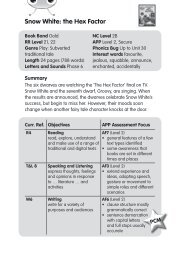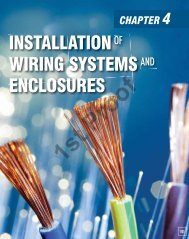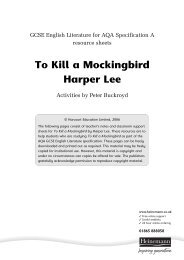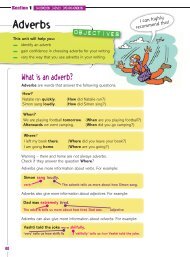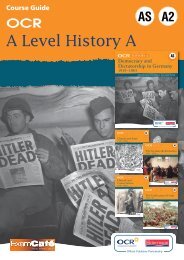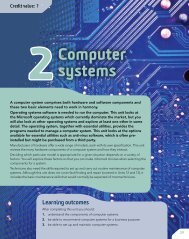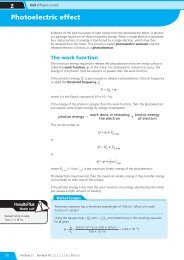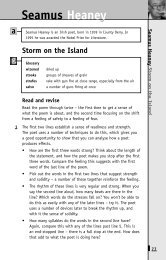Chapter 6 - Level 2 NVQ and Technical ... - Pearson Schools
Chapter 6 - Level 2 NVQ and Technical ... - Pearson Schools
Chapter 6 - Level 2 NVQ and Technical ... - Pearson Schools
You also want an ePaper? Increase the reach of your titles
YUMPU automatically turns print PDFs into web optimized ePapers that Google loves.
(ii) Use of class II equipment <strong>and</strong>/or equivalent insulation. Class II usually relates<br />
to portable equipment or factory-built equipment. Equipment to this class must<br />
not have enclosing metalwork earthed. Furthermore for a class II installation,<br />
close supervision is required to ensure the installation or its equipment is not<br />
changed from class II. The symbol on the equipment that indicates that it is class<br />
II or double insulated is a square within a square.<br />
(iii) Non-conducting location, i.e. physical separation from exposed conductive<br />
parts, no earth connection.<br />
(iv) Earth free local equipotential bonding. Every part is bonded <strong>and</strong> therefore ‘no<br />
voltage difference – no shock’.<br />
(v) Electrical separation. A transformer fed secondary is not connected to earth or<br />
an isolated generator supply is used.<br />
Methods (iii) to (v) have a limited application, as close supervision is required. The<br />
design must be specified by a qualified electrical engineer. The basic limitation of<br />
these methods is the need to maintain their design condition. There should be no<br />
incorrect modifications, additions or deterioration.<br />
Overcurrent protection<br />
Protection devices<br />
In a healthy electrical system, insulation between phase conductors <strong>and</strong> neutral<br />
conductors or between live conductors <strong>and</strong> earth is sound, with current flowing from<br />
the supply, through the load <strong>and</strong> returning via the neutral to its source.<br />
Overcurrent protection is provided by means of a circuit breaker or fuse. These<br />
devices are designed to operate within specified limits, disconnecting the supply<br />
automatically in the event of an overload or fault current (short circuits or earth faults).<br />
Earth-fault protection is also provided by means of a circuit breaker or fuse, which<br />
operates under earth-fault conditions. If a high value current flows, these will safely<br />
disconnect the supply but may not be relied upon to detect <strong>and</strong> disconnect the<br />
supply in the event of low values of earth leakage current.<br />
Residual current devices (RCDs) are designed to detect <strong>and</strong> automatically disconnect<br />
the supply in the event of earth-faults. Earth-faults can exist, for example, when a<br />
live conductor touches an equipment case or if you cut through a cable when cutting<br />
the grass. They are potentially dangerous <strong>and</strong> must be eliminated in order to prevent<br />
hazards resulting from electric shock or abnormal temperature rises <strong>and</strong> fires in the<br />
electrical installation.<br />
Overcurrent protection device applies to fuses <strong>and</strong> miniature circuit breakers<br />
(MCBs). In this section we will be looking at the various means by which these<br />
devices provide protection to cables <strong>and</strong> circuits from damage caused by too much<br />
current flowing. The appropriate device must operate within 0.4 or 5.0 seconds.<br />
<strong>Chapter</strong> 6 Basic electrical circuitry <strong>and</strong> applications<br />
147



